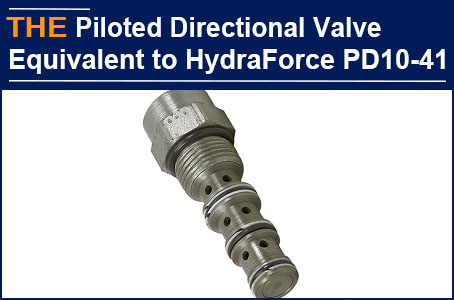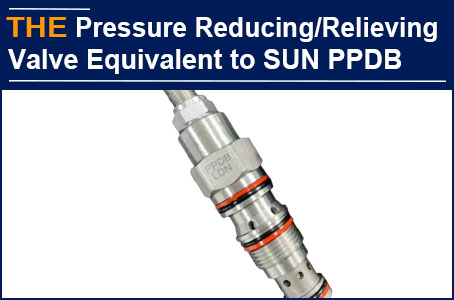Jone is a hydraulic customer from Canada. In recent years, his purchasing of hydraulic valves has been very smooth. However, an urgent order of 200 hydraulic valve blocks in his hand recently gave him a headache. The customer reported that 70% of the hydraulic valve blocks had large coaxiality deviation between the hole and the outer circle, which damaged the thread of the cartridge valve during assembly. The customer requested him to replenish half of the hydraulic valve blocks within 15 days, but the original manufacturer of the hydraulic valve blocks had to surrender. Although the lathe processing parameters were adjusted, and even the hydraulic valve block materials were changed, the hole position drift could not be solved, that is, the coaxiality deviation between the hole and the outer circle was large. Jone consulted more than 20 hydraulic valve block manufacturers before and after. Most of the manufacturers said that they could not completely avoid the drift generated during the drilling process of the hydraulic valve blocks, which could only be controlled between 1-2‰, but the customer's requirements could not be higher than 1‰. A week had passed, and Jone was still unable to give a plan for the aftermath, and his boss was not satisfied.
Jone, introduced by his friend Blake, who is also my old customer, sent me an email. According to his hydraulic valve block drawings and the layout of the holes, I told him that during deep hole drilling, there would be symmetry errors between the two cutting edges of the drill bit, or the sharpness of the drill bit would be inconsistent after wear, which would cause the hole position to drift. Under normal circumstances, for example, it is difficult to control the 100mm drift value at 0.1mm, that is, the error of 1 ‰. There are really not many hydraulic valve block manufacturers who can meet his customer’s requirement standard. Even if the hole is reamed after drilling, the hole position drift caused by drilling cannot be corrected. However, 3 years ago, AAK did not adopt this traditional processing method and matured the new processing technology. Jone asked me to help replenish the goods directly. The customer had no time to wait for the samples.
Three weeks later, AAK sent a replenishment of 100 hydraulic valve blocks and told Jone not to worry about the problem of hole drift that the original manufacturer could not solve. AAK hydraulic valve block is processed by using the outer circle to adapt to the inner hole, which is not only less than 1 ‰ of the error, but also has no deviation in the coaxiality between the hole and the outer circle. Here is how our workshop processes it:
(1) Blanking, with a total length allowance of 2mm.
(2) Lathing the left end face to be shiny, rough lathing the outer circle to be φ 35.5mm.
(3) Clamp the rough turned excircle at the left end and finish turning the right end face to ensure a total length of 80 ± 0.05 mm. Drill and ream φ 4.9 ± 0.05 mm through hole.
(4) Deburr the holes at both ends, and process φ 4.9 ± 0.05 mm holes at the two sharp tips, fine turning φ 34.9 mm outer circle.
(5) With φ 34.9 mm excircle as the benchmark to process other dimensions.
With φ 4.9 ± 0.05 mm holes machined first, and then φ 4.9 ± 0.05 mm hole is used as the benchmark to process the remaining dimensions of the hydraulic valve block so that the drift error in the processing of φ4.9 ± 0.05 mm hole was corrected in the subsequent processing, and the coaxiality between the hole and the outer circle of the hydraulic valve block was also guaranteed.
AAK hydraulic valve block valve hole, no hole drift, high coaxiality precision, you can also have a small try!
AAK HYDRAULIC VALVES (268) 2022-06-25
 Pressure Reducing/Relieving Valve equivalent to HydraForce PR10-36 that AAK developed last March, is approved by the Russian customer after 1 year
Pressure Reducing/Relieving Valve equivalent to HydraForce PR10-36 that AAK developed last March, is approved by the Russian customer after 1 year
 Piloted directional valve equivalent to HydraForce PD10-41 passed testing, AAK received the more inquiries from customer in the United States
Piloted directional valve equivalent to HydraForce PD10-41 passed testing, AAK received the more inquiries from customer in the United States
 For Pilot-Operated Pressure Reducing/Relieving Valve equivalent to SUN PPDB-LDN, AAK received the re-peat order from customer in Europe
For Pilot-Operated Pressure Reducing/Relieving Valve equivalent to SUN PPDB-LDN, AAK received the re-peat order from customer in Europe
 For Hydraulic Flow divider/combiner valve equivalent to HydraForce FD50-45, AAK received the trial order from a Customer in the United States
For Hydraulic Flow divider/combiner valve equivalent to HydraForce FD50-45, AAK received the trial order from a Customer in the United States